Abstract
The Auditory Response Cradle (ARC) is a fully automated microprocessor controlled machine that was designed for the hearing screening of full term neonates. In order to evaluate the ARC, 6000 babies were screened at a district maternity hospital over a period of three years. Every infant subsequently entered a three year follow up programme. One hundred and two babies (1.7%) failed the ARC screen (that is, they failed two ARC tests) and 20 of these were found to have some hearing impairment: in 10 it was severe (80-90 dBHL), in seven moderate (45-60 dBHL), and in three it was mild to moderate (less than 45 dBHL). In addition, of the 20 babies who failed a first test and were discharged before a second could be performed, two were confirmed to have a severe hearing loss; 79 infants failing the screen were cleared on further testing, giving the ARC a false positive rate of 1.3%. On following up all 6000 infants for three years, seven children who passed the neonatal screen were subsequently found to have a hearing loss. For two babies the aetiology was unknown but for five the hearing impairment was either due to a hereditary progressive loss or definite postnatal factors. Progressive and acquired hearing losses cannot be detected at a neonatal screen and this emphasises the need for follow up screens at other stages in the child's life. In this long term study the ARC has been found to have a high detection rate for severe hearing loss and confirms the practical possibility of using a behavioural technique for the universal screening of hearing in neonates.
Full text
PDF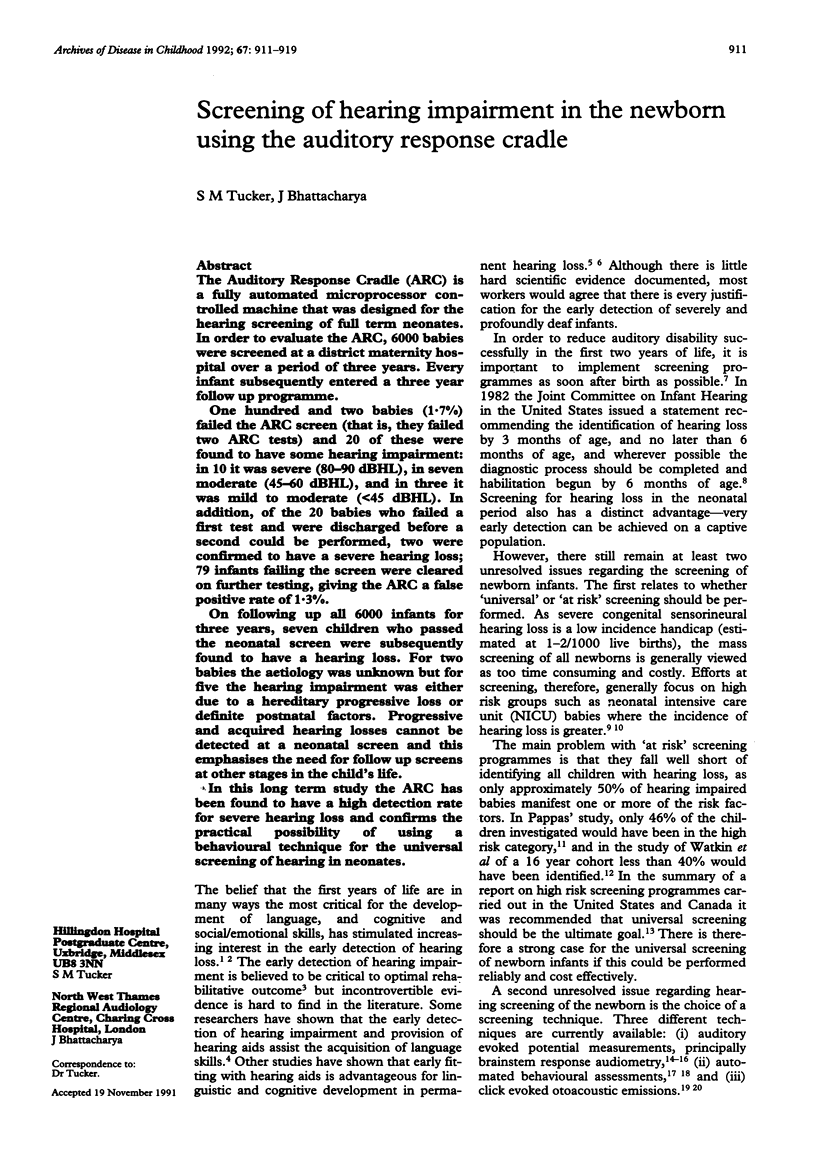
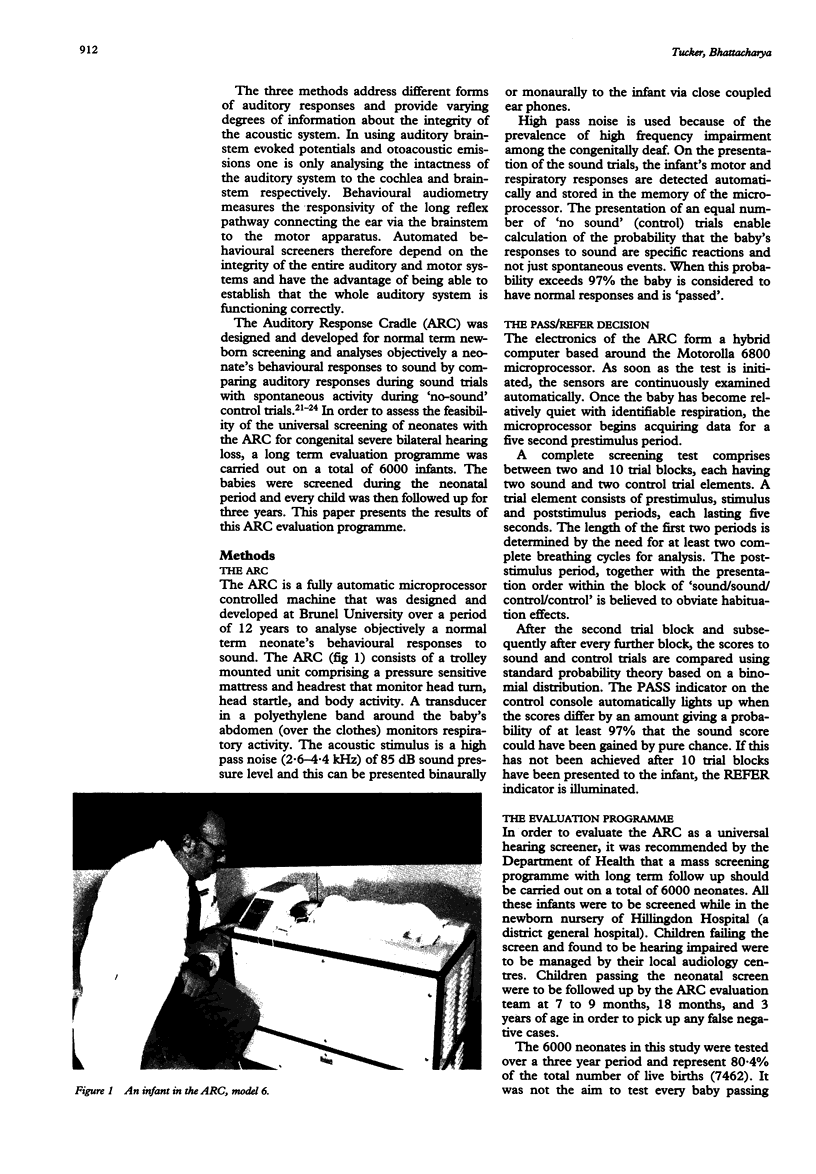
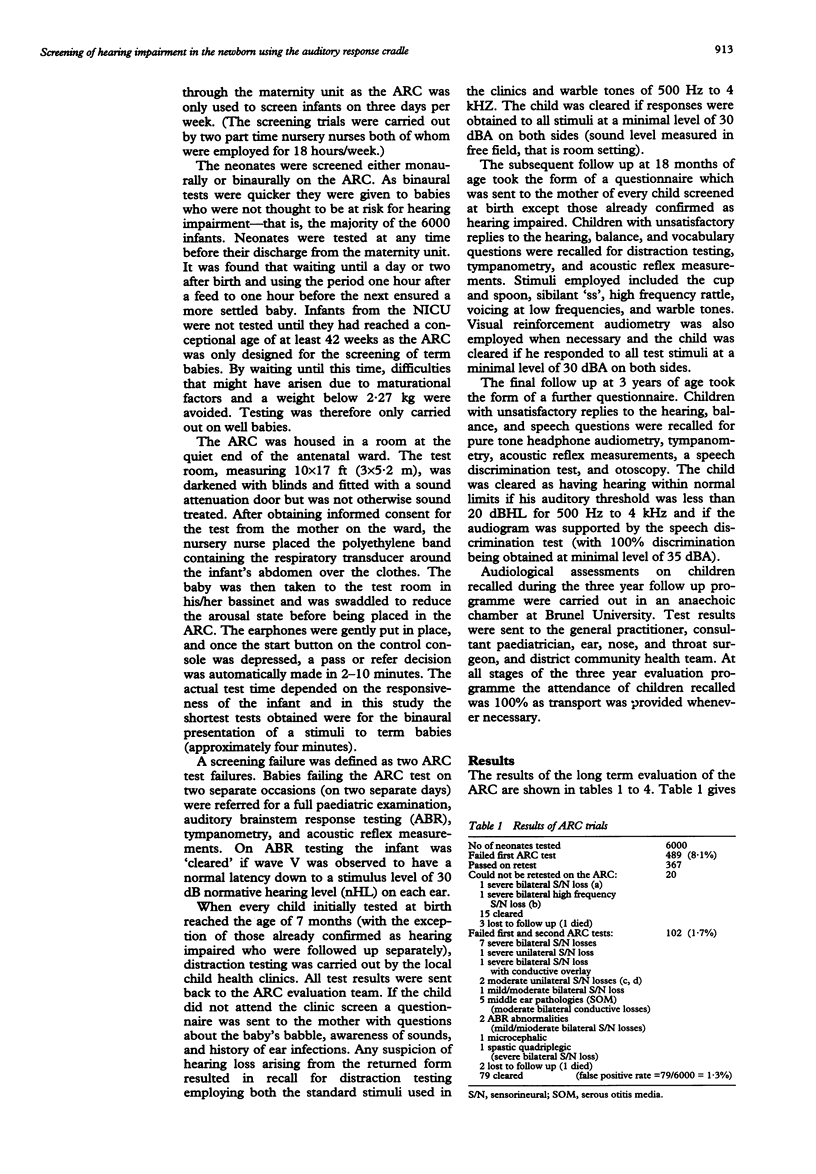
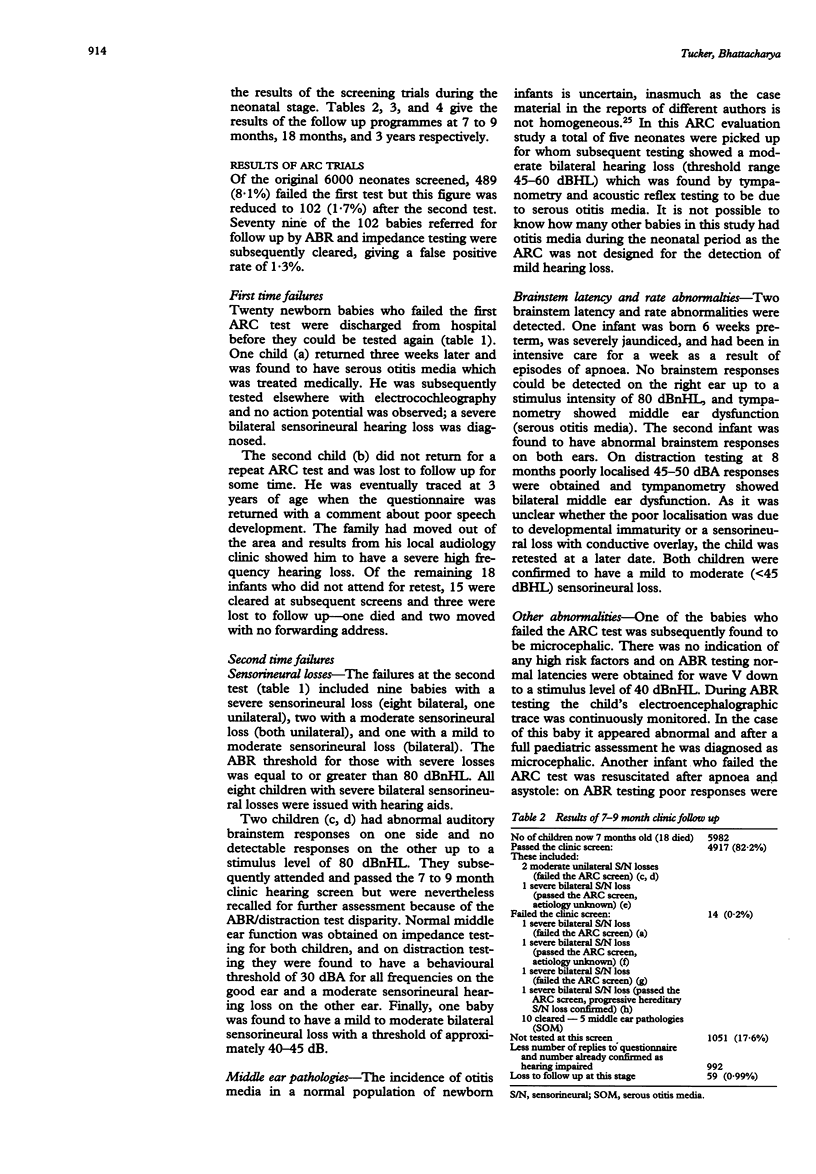
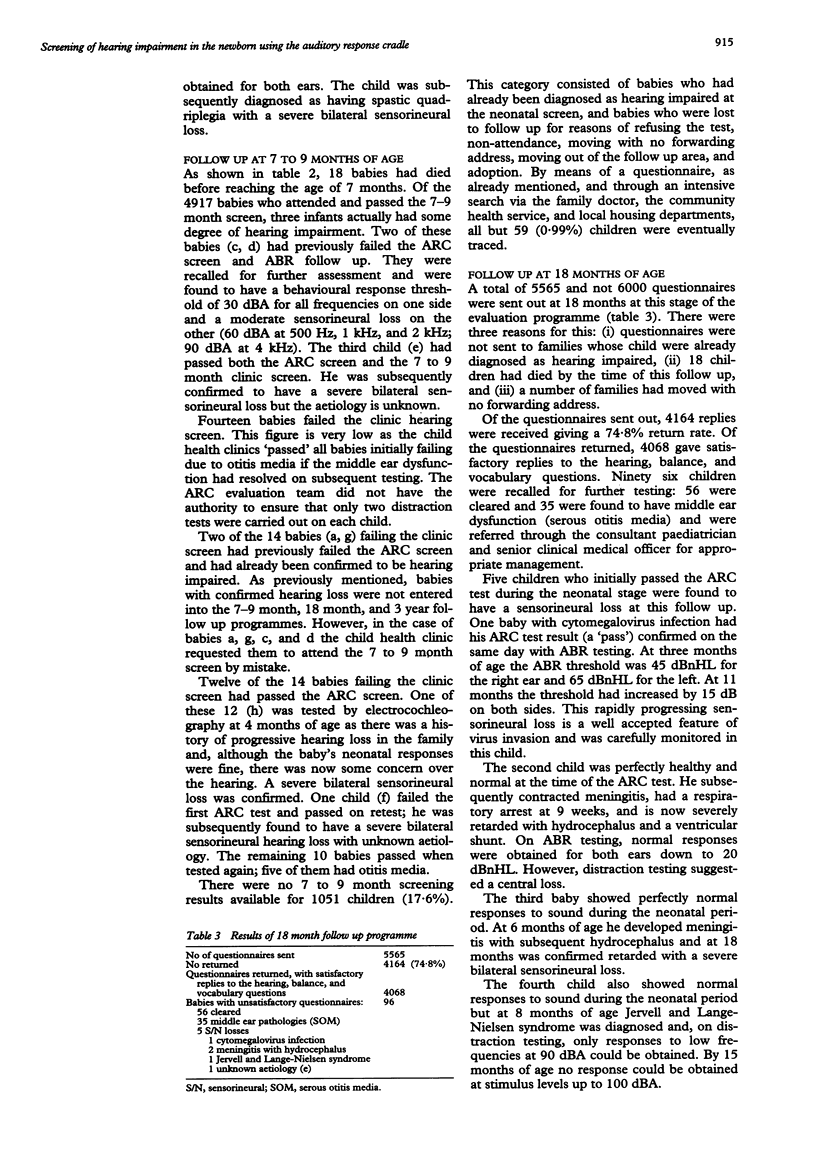
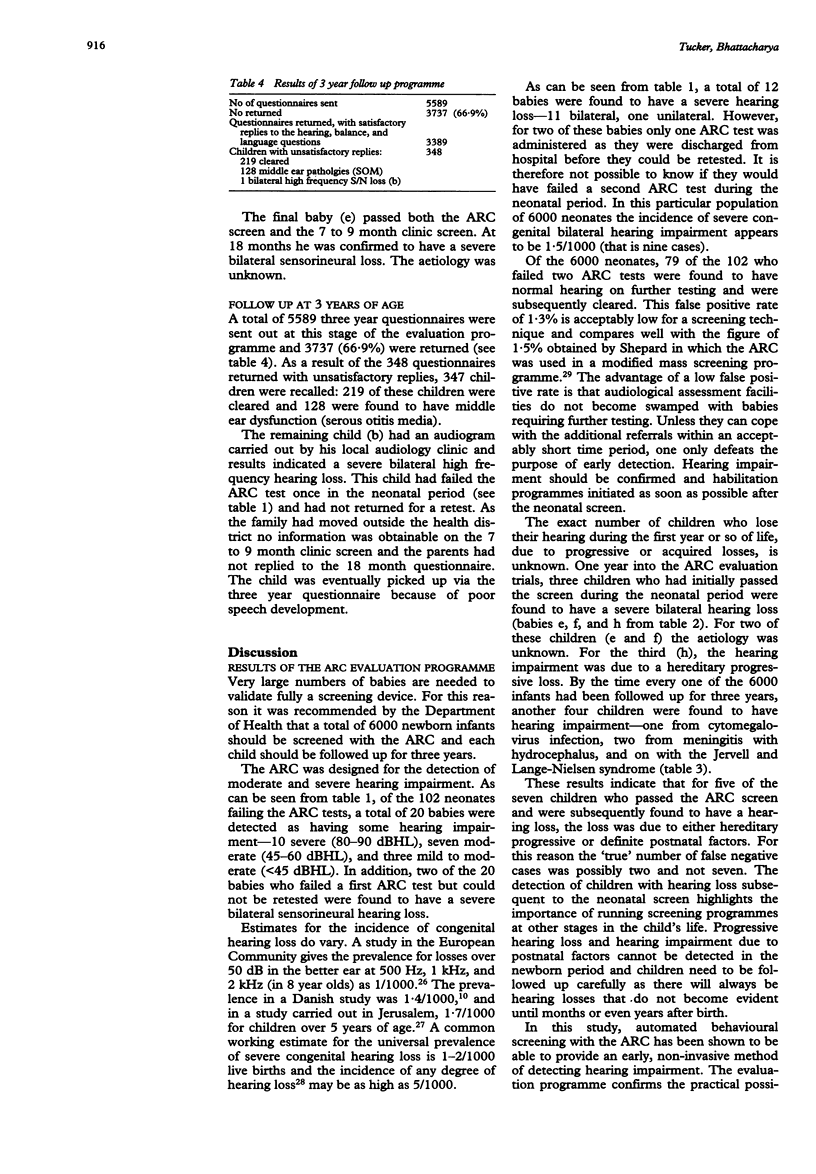
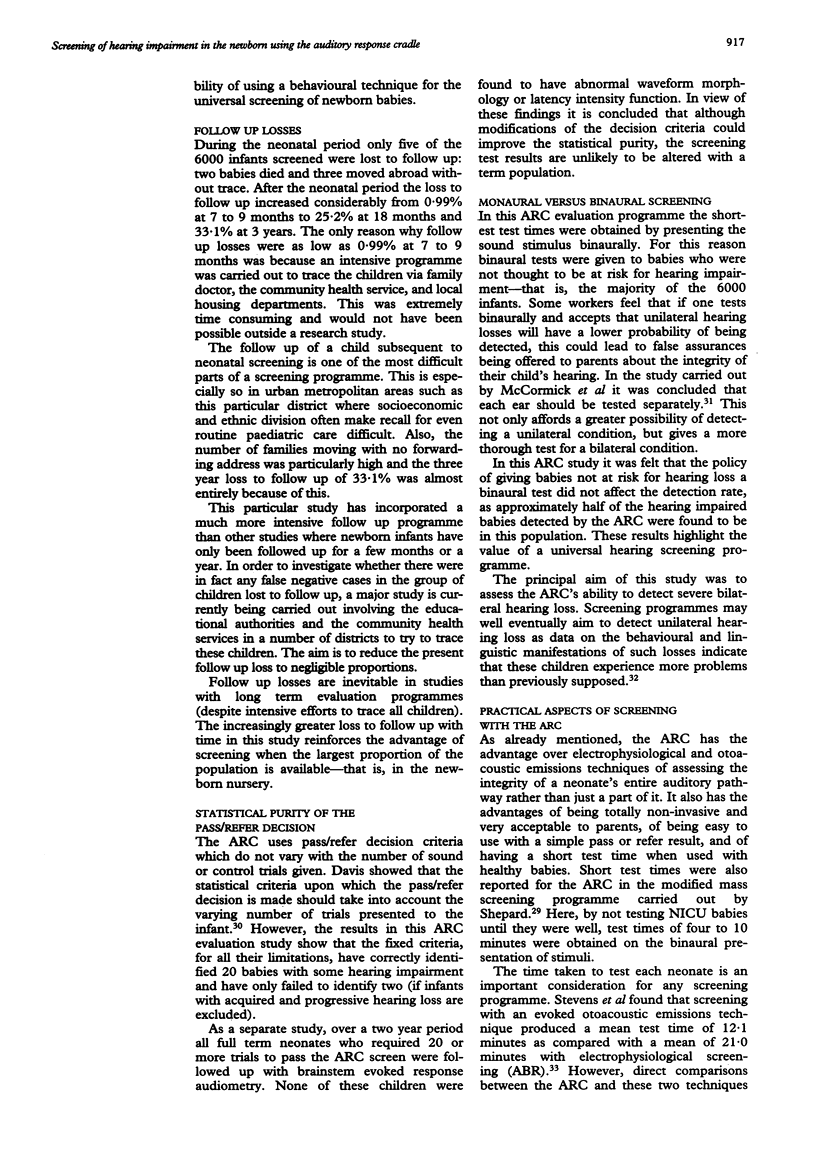
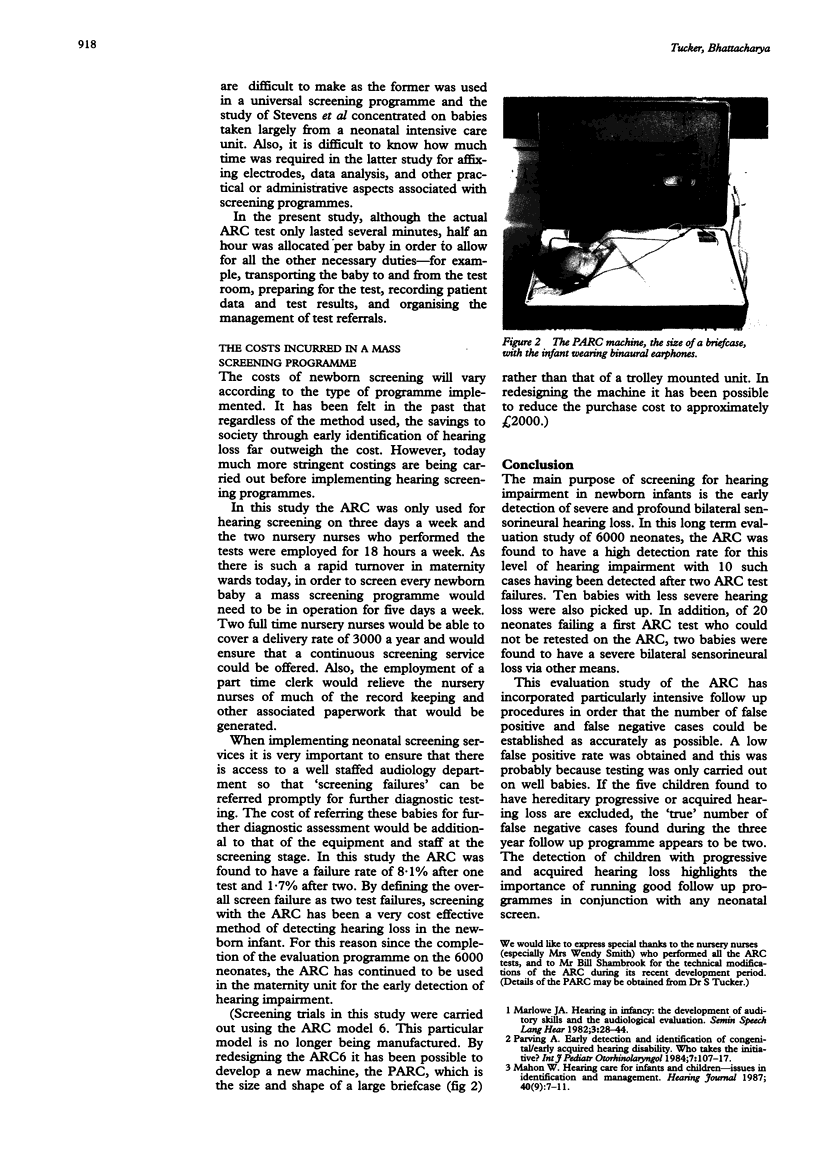
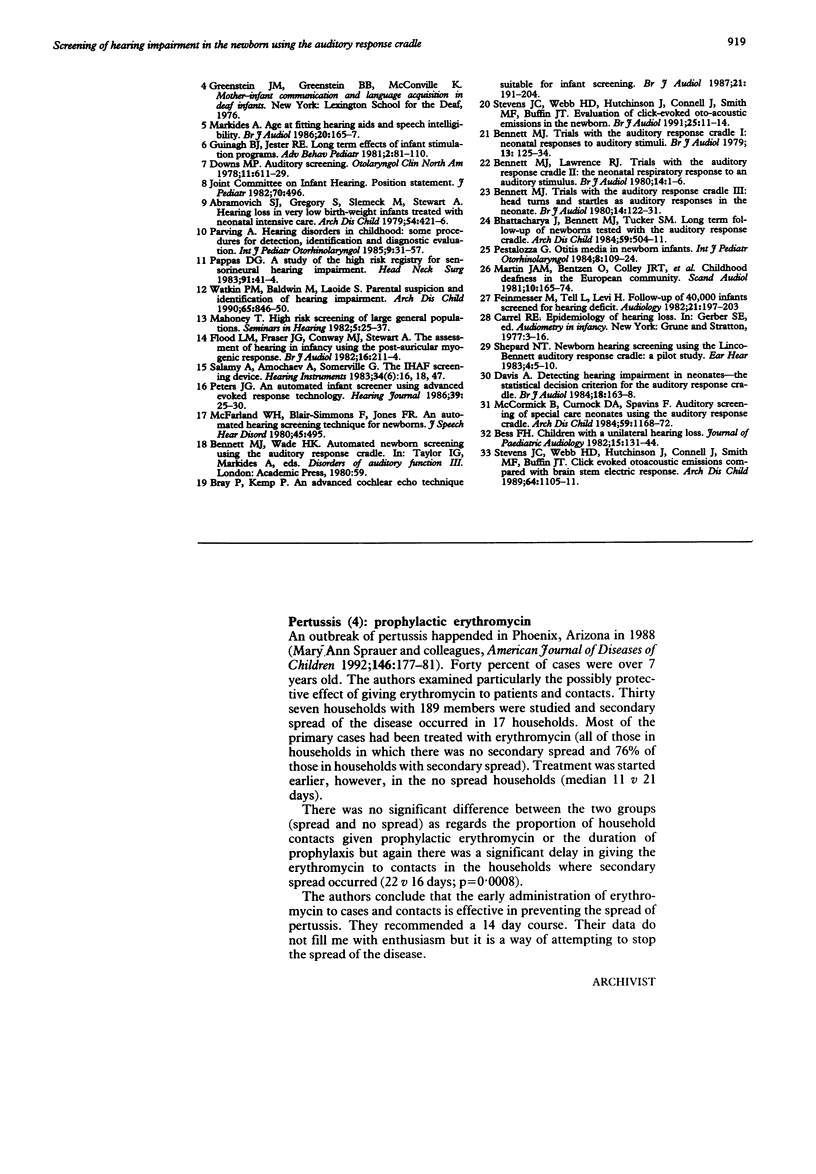
Images in this article
Selected References
These references are in PubMed. This may not be the complete list of references from this article.
- Abramovich S. J., Gregory S., Slemick M., Stewart A. Hearing loss in very low birthweight infants treated with neonatal intensive care. Arch Dis Child. 1979 Jun;54(6):421–426. doi: 10.1136/adc.54.6.421. [DOI] [PMC free article] [PubMed] [Google Scholar]
- Bennett M. J., Lawrence R. J. Trials with the Auditory Response Cradle. II--The neonatal respiratory response to an auditory stimulus. Br J Audiol. 1980 Feb;14(1):1–6. doi: 10.3109/03005368009078892. [DOI] [PubMed] [Google Scholar]
- Bennett M. J. Trials with the auditory response cradle III: head turns and startles as auditory responses in the neonate. Br J Audiol. 1980 Nov;14(4):122–131. doi: 10.3109/03005368009072017. [DOI] [PubMed] [Google Scholar]
- Bennett M. J. Trials with the auditory response cradle. 1--Neonatal responses to auditory stimuli. Br J Audiol. 1979 Nov;13(4):125–134. doi: 10.3109/03005367909078887. [DOI] [PubMed] [Google Scholar]
- Bhattacharya J., Bennett M. J., Tucker S. M. Long term follow up of newborns tested with the auditory response cradle. Arch Dis Child. 1984 Jun;59(6):504–511. doi: 10.1136/adc.59.6.504. [DOI] [PMC free article] [PubMed] [Google Scholar]
- Bray P., Kemp D. An advanced cochlear echo technique suitable for infant screening. Br J Audiol. 1987 Aug;21(3):191–204. doi: 10.3109/03005368709076405. [DOI] [PubMed] [Google Scholar]
- Davis A. Detecting hearing-impairment in neonates--the statistical decision criterion for the Auditory Response Cradle. Br J Audiol. 1984 Aug;18(3):163–168. doi: 10.3109/03005368409078943. [DOI] [PubMed] [Google Scholar]
- Downs M. P. Auditory screening. Otolaryngol Clin North Am. 1978 Oct;11(3):611–629. [PubMed] [Google Scholar]
- Feinmesser M., Tell L., Levi H. Follow-up of 40,000 infants screened for hearing defect. Audiology. 1982;21(3):197–203. doi: 10.3109/00206098209072739. [DOI] [PubMed] [Google Scholar]
- Flood L. M., Fraser J. G., Conway M. J., Stewart A. The assessment of hearing in infancy using the post-auricular myogenic response. Evaluation of an instrument which simplifies its detection. Br J Audiol. 1982 Nov;16(4):211–214. doi: 10.3109/03005368209081464. [DOI] [PubMed] [Google Scholar]
- Markides A. Age at fitting of hearing aids and speech intelligibility. Br J Audiol. 1986 May;20(2):165–167. doi: 10.3109/03005368609079011. [DOI] [PubMed] [Google Scholar]
- Martin J. A., Bentzen O., Colley J. R., Hennebert D., Holm C., Iurato S., de Jonge G. A., McCullen O., Meyer M. L., Moore W. J. Childhood deafness in the European community. Scand Audiol. 1981;10(3):165–174. doi: 10.3109/01050398109076177. [DOI] [PubMed] [Google Scholar]
- McCormick B., Curnock D. A., Spavins F. Auditory screening of special care neonates using the auditory response cradle. Arch Dis Child. 1984 Dec;59(12):1168–1172. doi: 10.1136/adc.59.12.1168. [DOI] [PMC free article] [PubMed] [Google Scholar]
- McFarland W. H., Simmons F. B., Jones F. R. An automated hearing screening technique for newborns. J Speech Hear Disord. 1980 Nov;45(4):495–503. doi: 10.1044/jshd.4504.495. [DOI] [PubMed] [Google Scholar]
- Milner A. D., Hoskyns E. W. High frequency positive pressure ventilation in neonates. Arch Dis Child. 1989 Jan;64(1 Spec No):1–3. doi: 10.1136/adc.64.1_spec_no.1. [DOI] [PMC free article] [PubMed] [Google Scholar]
- Pappas D. G. A study of the high-risk registry for sensorineural hearing impairment. Otolaryngol Head Neck Surg. 1983 Feb;91(1):41–44. doi: 10.1177/019459988309100108. [DOI] [PubMed] [Google Scholar]
- Parving A. Early detection and identification of congenital/early acquired hearing disability. Who takes the initiative? Int J Pediatr Otorhinolaryngol. 1984 May;7(2):107–117. doi: 10.1016/s0165-5876(84)80035-x. [DOI] [PubMed] [Google Scholar]
- Parving A. Hearing disorders in childhood, some procedures for detection, identification and diagnostic evaluation. Int J Pediatr Otorhinolaryngol. 1985 Jun;9(1):31–57. doi: 10.1016/s0165-5876(85)80003-3. [DOI] [PubMed] [Google Scholar]
- Pestalozza G. Otitis media in newborn infants. Int J Pediatr Otorhinolaryngol. 1984 Dec;8(2):109–124. doi: 10.1016/s0165-5876(84)80060-9. [DOI] [PubMed] [Google Scholar]
- Shepard N. T. Newborn hearing screening using the Linco-Bennett auditory response cradle: a pilot study. Ear Hear. 1983 Jan-Feb;4(1):5–10. doi: 10.1097/00003446-198301000-00004. [DOI] [PubMed] [Google Scholar]
- Stevens J. C., Webb H. D., Hutchinson J., Connell J., Smith M. F., Buffin J. T. Evaluation of click-evoked oto-acoustic emissions in the newborn. Br J Audiol. 1991 Feb;25(1):11–14. doi: 10.3109/03005369109077859. [DOI] [PubMed] [Google Scholar]
- Watkin P. M., Baldwin M., Laoide S. Parental suspicion and identification of hearing impairment. Arch Dis Child. 1990 Aug;65(8):846–850. doi: 10.1136/adc.65.8.846. [DOI] [PMC free article] [PubMed] [Google Scholar]




